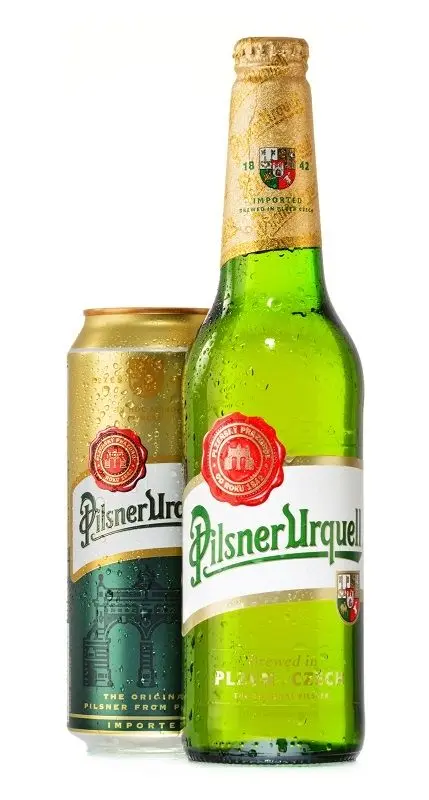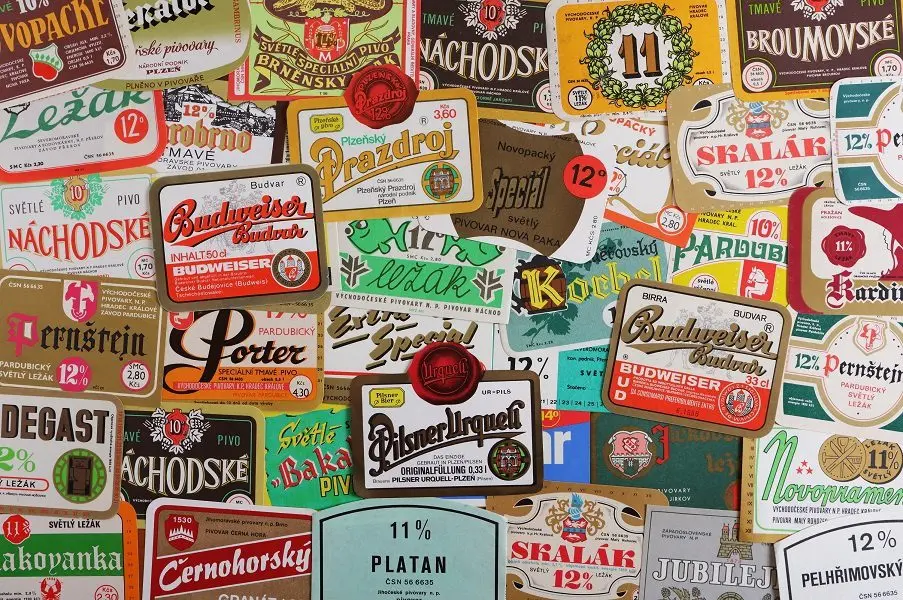Contents
Czech beer is not just one of the variations of the intoxicating drink popular all over the world, but a real national brand, a name controlled by origin. Despite the fact that there are many breweries operating in the Czech Republic, not all of them produce real “Czech beer”: in 2013, only 16 productions could boast of such a privilege.
To receive the coveted status, the drink must:
- issued in the Czech Republic;
- pass a rigorous audit for compliance with all sorts of norms, criteria and local traditions, from color to density.
Historical information
The Celts, who lived in Europe thousands of years ago, were able to brew beer, the results of archaeological excavations testify to this, but it is still impossible to consider this drink as the forerunner of Czech brewing. The official date for the start of hop processing is 1088 – it was then that King Vratislav II transferred several bags of this plant to one of the monasteries with an order to make beer, the records were preserved in the personal correspondence of the monarch. However, it is reliably known that beer was brewed in the Břevnov Monastery starting from 993.

Breweries appeared a little later – in 1118 (first in the town of Brno, then in Pilsen and Ceske Budejovice), and only three centuries later, small-town production grew into large factories.
In 1842, Pilsner, a new beer, was introduced, a bottom-fermented lager that had a characteristic mild taste with hoppy bitterness, thick foam and a light golden color. The drink began a triumphal march across Europe, it was thanks to him that the world got acquainted with Czech beer. Today, the term “Pilsner” refers both to a specific brand and as a general name for Czech pale lagers.

The First World War brought an economic crisis to Europe, many breweries could not survive the troubled times and closed. Then the Czech Republic was part of the socialist camp for a long time, which also did not contribute to the development of the country’s unique style. However, local brewers carefully preserved old traditions and even brewed beer according to family recipes, neglecting unified prescriptions.
Average characteristics
Almost all varieties produced in the Czech Republic belong to the pale lager of the Pilsner type. The color of the drink varies from light gold to almost black, and the strength is from 3 to 9 turns, but not all products of Czech breweries fit into this framework.
Types of Czech beer
Type of malt:
- light;
- dark;
- semi-dark;
- cut (blend).
Taste:
1. From barley malt:
- table (density
- vicepni (density 7-10%);
- sun loungers (density 11-12%);
- special grades (density >13%);
- porters (density >18%);
2. Wheat (not less than 33% wheat malt);
3. Non-alcoholic (
4. Fermentation (wort is added to the finished drink);
5. Flavored (with the taste of fruits, herbs, spices, honey, etc.);
6. From other grains (at least 33% non-barley and non-wheat malt).
By region of production:
- České Budějovice. Brewing in this city has been developing since the XNUMXth century, the world’s oldest Budweiser is produced here. A hundred years after the appearance of the Czech brand in the United States, they launched the production of beer with the same name, which led to endless disputes over the right to the name, so in America this Czech beer is sold under the Czechvar brand.
- Pilsen. Pilsner’s birthplace. In 1842, a local brewery hired Joseph Groll, a German brewer with a background in the art of lager brewing. Under the guidance of a new master, it was possible to obtain a light golden light alcoholic drink that has no analogues in the world.
- Prague. The history of Czech brewing is closely connected with the activities of monasteries in the country’s capital and its environs.
- Brno and South Moravia. This region is better known for its wine-making traditions, but beer is also not forgotten here, and since the 2000s there has been a real boom in mini-breweries with craft varieties.
Popular brands of Czech beer
Pilsner Urquell (“original Pilsner”) – the very first Pilsner beer, which gave rise to a new style of brewing. The intoxicating drink has fruity notes in the “bouquet” and a deep aroma.
Budweiser Budvar (Budweiser Budvar) – do not confuse with the American “Budweiser”, one of the oldest and most popular varieties.
Velkopopovicky Kozel (Velkopopovitsky Kozel) – produced since 1874, the dark variation of the brand is famous for its chocolate-fruity flavor.
Gambrinus (Gambrinus) – named after the king of Flanders, famous for his success in the field of brewing.
Radegast (Radegast) – produced since 1970, one of the most popular Czech beer brands in Europe.
Staropramen (Staropramen) – the second largest beer production in the Czech Republic, there are non-alcoholic varieties.
Krušovice (Krušovice) – produced in several “performances”, the dark variety with a caramel-bitter flavor is considered the most delicious.

How people drink beer in the Czech Republic
The Czechs love and know how to drink their national intoxicating drink. They argue that you can feel the real taste of beer only on the third mug, and it should be drained in three sips: first, drink half of the entire volume at once, then half of the remaining drink, and, finally, “finish off” the last quarter.
The following snacks are especially popular:
- cheese plate;
- cheese, fish, onion and oil salad;
- pickled cheese with garlic;
- cold cuts;
- raw salmon mince;
- bread;
- salted or pickled fish;
- meat pudding.

If you want something hot, the Czechs serve fried cheese, vegetable dishes, risotto to the table, but the classic dish of Czech cuisine remains out of competition – a baked pork leg.









